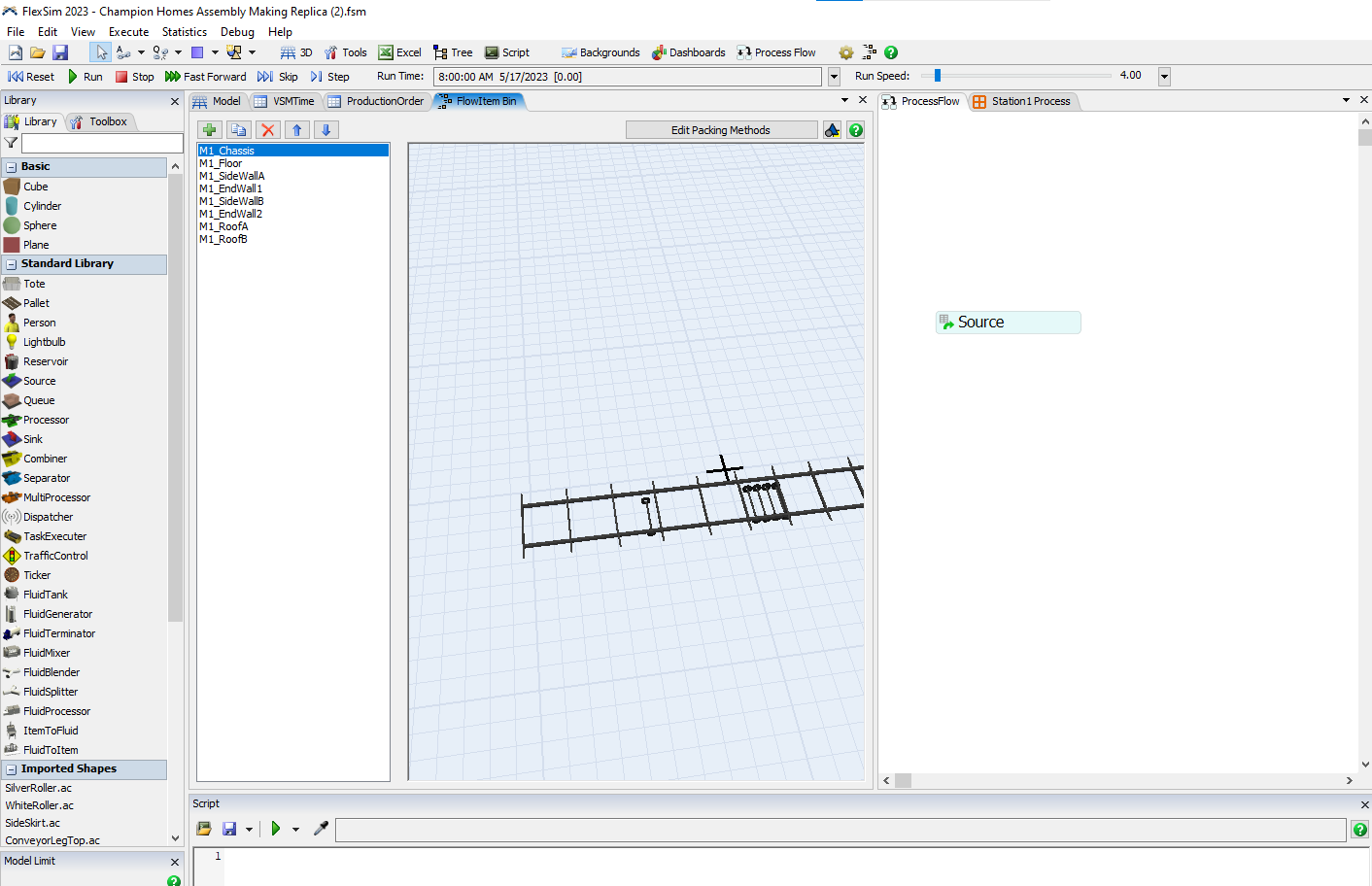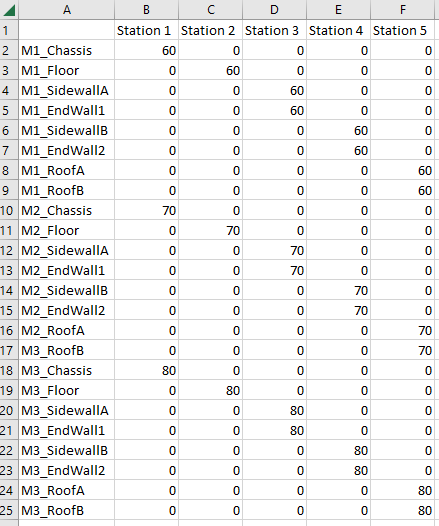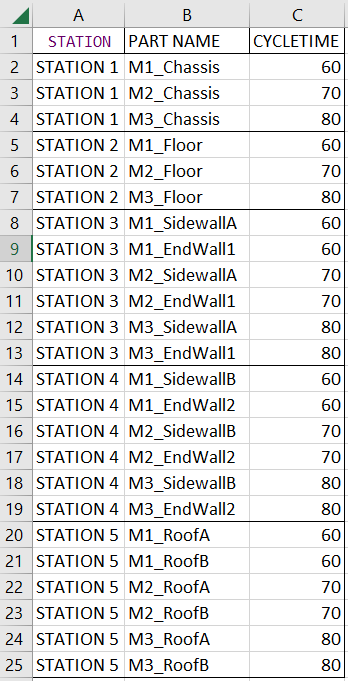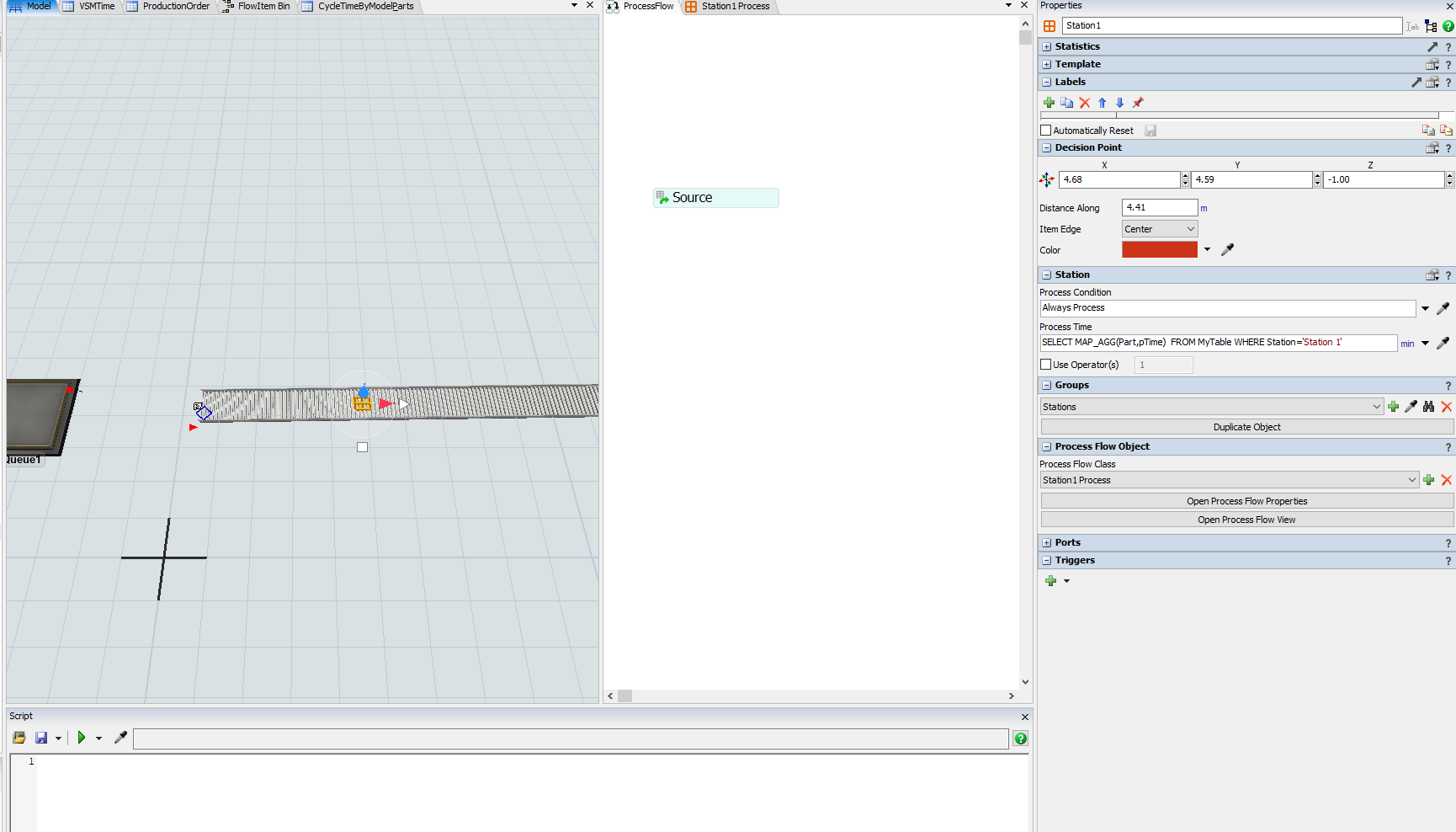I have imported various objects (from Sketchup) that I plan to use Map function to attach on top of only one Flow Item.
In the list, anything named in the format "M1_xxxxxxx" are objects (shown in picture) that are mapped on top of 'M1_Chassis' (flow item) to show that an object is being assembled. This just means these are all parts of one type of model "M1".

Two questions:
1. What is the best way to develop a database of 10 different models, each having parts just like M1 has? Should i just keep doing what i did for M1?
2. I want to associate cycle time to assemble each of these parts at a specific station in assembly line) for all 10 different models. How do i make that happen? Making a matrix in Global table (excel database shown below)? The "0" minutes in the cycle time matrix mean that the part does not get assembled at that station. If it gets assembled, at a station, it will have a number greater than 0 minutes.




